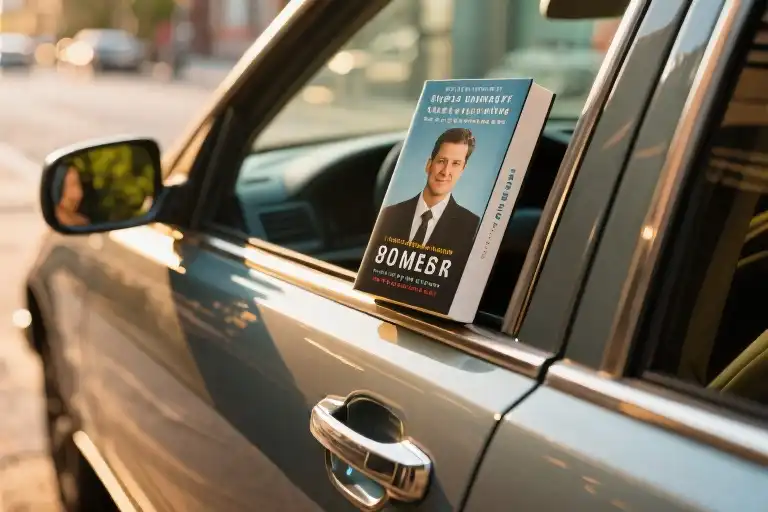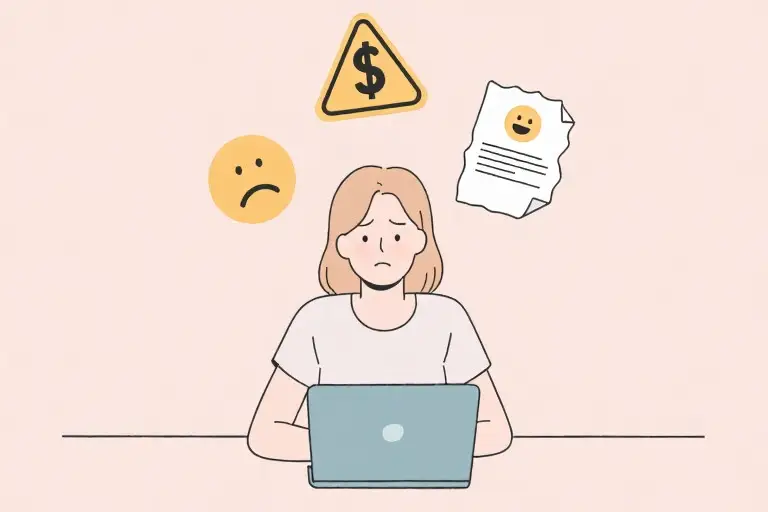The Uber pulled up to the curb with an unexpected advertisement plastered across its rear passenger door—a glossy book cover featuring a dragon soaring over a dystopian cityscape, accompanied by bold red text screaming: ‘READ MY NOVEL! Available now on Amazon!’ My fingers paused mid-air before opening the car door. As someone entrenched in traditional publishing—having worked as an editor and business developer for literary journals—I’ll admit my first instinct was to roll my eyes. A self-published author advertising on their car? This felt like the epitome of what my industry colleagues would call ‘amateur hour.’
But what unfolded during that 20-minute ride reshaped my perspective on publishing’s harsh realities. The driver, let’s call him David, turned out to be a hybrid-published fantasy author who’d invested nearly $10,000 in editing, cover design, and even a professional audiobook. His returns after six months? Less than $1,000. As we navigated downtown traffic, his story unraveled like a cautionary tale: Why do writers pour resources into publishing when the odds are stacked against them?
This encounter crystallized a truth many authors avoid confronting: Publishing is a business first, an art form second. Whether you choose traditional publishing, self-publishing, or hybrid models, understanding the financial and emotional investments required is crucial. David’s hybrid publisher had promised marketing support and bookstore distribution, yet he still spent weekends handing out flyers at comic conventions. His experience mirrors data from Bowker’s Self-Publishing Report: 80% of self-published titles sell fewer than 100 copies annually.
Yet here’s the paradox—despite the dismal statistics, platforms like Amazon KDP see over 1.5 million new titles annually. Why? Because publishing taps into something primal. When I asked David why he wrote, he stumbled before saying, “I’ve always loved telling stories.” It’s the same answer I’ve heard from debut novelists at literary festivals and Pulitzer finalists alike. That creative impulse is universal, but the business acumen to sustain it? That’s where the industry’s fault lines emerge.
The car advertisement wasn’t just a marketing tactic; it was a symbol of publishing’s new era. Authors aren’t just writers anymore—they’re entrepreneurs responsible for branding, SEO optimization (how to market a self-published book), and financial risk assessment (self-publishing costs vs returns). As David dropped me off, he mentioned drafting a sequel. “Maybe this one will break even,” he laughed. His resilience stuck with me. However you publish—traditionally, independently, or somewhere in between—the journey demands equal parts creativity and calculus. Because in today’s landscape, writing the book is only chapter one.
The Publishing Landscape: A Three-Way Battlefield
The world of publishing is no longer a monolith. What was once a straightforward path – write a manuscript, secure an agent, land a traditional publishing deal – has fractured into multiple routes, each with its own promises and pitfalls. This diversification reflects our changing reading habits, technological advancements, and shifting attitudes toward creative ownership. Today’s authors navigate a complex ecosystem where traditional publishing, self-publishing, and hybrid models coexist in an uneasy equilibrium.
Defining the Contenders
Traditional Publishing remains the gold standard for many writers. In this model, publishing houses assume all financial risk – covering editing, design, printing, distribution, and marketing costs. Authors receive advances against royalties, typically ranging from modest four-figure sums for debut writers to six or seven figures for established names. The trade-off? Creative control diminishes as publishers make decisions about cover design, release timing, and even title changes based on market considerations. Acceptance rates are notoriously low, with major publishers accepting perhaps 1% of submissions.
Self-Publishing has shed much of its stigma since the early days of vanity presses. Platforms like Amazon KDP, IngramSpark, and Draft2Digital have democratized the process, allowing authors to upload manuscripts that become available globally within days. The author retains complete creative control and a higher percentage of royalties (typically 35-70% compared to traditional publishing’s 10-25%). However, all costs and responsibilities fall on the writer: professional editing, cover design, formatting, marketing, and distribution. The Uber driver from our opening story exemplifies this path – investing $10,000 with minimal returns.
Hybrid Publishing occupies the murky middle ground, combining elements of both models. These publishers typically charge authors upfront fees (ranging from $3,000 to $15,000) while providing services similar to traditional houses: editorial support, professional design, and sometimes distribution to physical bookstores. Unlike pure vanity presses, reputable hybrid publishers are selective, often accepting only 20-30% of submissions. They appeal to authors who want professional support without surrendering all control or facing traditional publishing’s gatekeepers.
Comparative Realities: A Cost-Benefit Analysis
| Dimension | Traditional Publishing | Self-Publishing | Hybrid Publishing |
|---|---|---|---|
| Cost | Publisher bears all expenses | Author funds everything | Author shares costs |
| Creative Control | Limited by publisher | Complete autonomy | Moderate influence |
| Time to Market | 18-24 months | As little as 30 days | 6-12 months |
| Marketing Support | Full publisher team | Entirely author-driven | Some shared resources |
| Royalty Rates | 10-25% of retail price | 35-70% of retail price | 30-50% of retail price |
| Prestige Factor | High industry recognition | Varies widely | Moderate credibility |
Our Uber driver’s hybrid publishing choice reflects a common miscalculation. Like many authors, he viewed it as a shortcut – avoiding traditional publishing’s rejections while gaining professional support. The reality proved more complicated. His $10,000 investment bought services that, while valuable, couldn’t guarantee what authors crave most: readers. This highlights hybrid publishing’s central paradox – it sells the dream of traditional publishing’s legitimacy while requiring self-publishing’s entrepreneurial hustle.
The Visibility Paradox
All publishing paths face the same fundamental challenge: discovery. Traditional publishers release about 300,000 new titles annually in the U.S. alone. Self-published books add another million-plus to that total. In this ocean of content, even excellent books can drown unnoticed. The driver’s car advertisements – while unconventional – represented a genuine attempt to solve this problem. His approach raises uncomfortable questions: When traditional marketing channels fail, what ethical boundaries should authors cross to gain attention? And how much self-promotion is too much before it damages one’s professional image?
This three-way publishing split shows no signs of consolidating. Each model serves different author priorities: traditional for prestige and support, self-publishing for control and speed, hybrid for compromise. Understanding these options’ realities – as our driver learned painfully – separates those who publish successfully from those who merely publish expensively.
The Harsh Math of Self-Publishing: Why Most Authors Lose Money
That Uber ride changed my perspective about self-publishing forever. As the driver detailed his $10,000 investment yielding less than $1,000 in returns, the calculator in my head started running cold, hard numbers. His story wasn’t unique – it’s the reality for approximately 80% of self-published authors according to recent Bowker reports. Let’s break down why the economics of self-publishing rarely add up.
The Hidden Costs of Going Solo
Many first-time authors dramatically underestimate the true cost of professional self-publishing. What begins as “just writing a book” quickly escalates into a series of necessary expenses:
- Developmental Editing ($1,500-$5,000): Even brilliant writers need objective structural feedback
- Copyediting ($800-$2,500): Grammar and consistency matter more than ever in the digital age
- Cover Design ($300-$1,500): Readers absolutely judge books by their covers
- Formatting ($200-$800): Print and ebook versions require different technical preparation
- ISBN Purchases ($125-$295): The barcode that makes your book discoverable
- Marketing Basics ($1,000+): Website, ARCs, social media ads, book tour expenses
Suddenly that “free” self-publishing path costs more than most used cars. The driver’s $10K investment? Completely typical for authors aiming for professional quality.
The Sales Cliff: Why Most Books Disappear
Here’s the uncomfortable truth: Over 4,500 new books enter the market daily just on Amazon. In this ocean of content, most self-published titles sink without trace within months. Industry data reveals:
- 92% of self-published books sell fewer than 100 copies
- Only 1% break the 1,000-copy threshold
- The average self-published author makes less than $500 per title
Our Uber driver’s experience mirrored these statistics perfectly. After exhausting his personal network (the “friends and family” sales bump), he hit the same wall all authors face: discovering actual strangers willing to pay for your work requires marketing savvy most creatives don’t possess.
Marketing: The Make-or-Break Factor
Traditional publishers allocate entire departments to:
- Securing bookstore placements
- Pitching media coverage
- Running targeted ad campaigns
- Building author platforms
Self-published authors must become one-person marketing teams overnight. The driver’s car decals represented a common (if ineffective) strategy. More impactful approaches include:
- Building an Email List (Cost: $0 but 100+ hours)
- Offer free chapters in exchange for signups
- Nurture relationships before launch
- Strategic Pricing (Cost: Lost upfront revenue)
- Temporary $0.99 promotions to boost visibility
- Kindle Unlimited exclusivity tradeoffs
- Professional Outreach (Cost: $500-$2,000)
- Book blogger reviews ($50-$300 each)
- Library and bookstore consignment programs
Yet even executed perfectly, these efforts rarely recoup the initial investment. The cruel irony? You often need marketing money to make marketing money.
The Hybrid Publishing Trap
Many authors (like our driver) turn to hybrid publishers hoping for a middle ground. These operations typically:
- Charge $3,000-$15,000 upfront
- Offer vague promises of “distribution”
- Provide minimal actual marketing
While less predatory than outright vanity presses, hybrid models still leave authors shouldering most costs and risks. The driver’s hybrid experience proved typical – enough support to get the book made, nowhere near enough to make it successful.
Rethinking “Success” in Self-Publishing
After analyzing hundreds of cases like our Uber driver’s, I’ve identified three realistic paths forward:
- The Hobbyist Approach
- Budget: Under $2,000
- Goal: Create a quality book for personal satisfaction
- Accept minimal sales beyond inner circle
- The Business Investment
- Budget: $10,000+ with marketing expertise
- Goal: Treat publishing as a startup
- Requires treating writing as secondary to entrepreneurship
- The Long-Game Strategy
- Budget: Spread over multiple books
- Goal: Build readership gradually over years
- Requires publishing 3-5 titles minimum
The driver clearly hadn’t chosen consciously between these paths – a common oversight. Without defined goals and parameters, self-publishing becomes financial Russian roulette.
Every author deserves to understand these realities before spending their savings. While the democratization of publishing represents tremendous opportunity, it also removes the safety nets traditional publishing provided. Knowledge won’t eliminate the risks, but it might help you avoid our driver’s expensive lesson.
The Creative Urge vs. Publishing Realities
The Uber driver’s fingers tapped nervously on the steering wheel when I asked the question that hangs over every author’s career: “Why do you write?” His hesitation spoke volumes – that momentary scramble for words revealing the uncomfortable gap between artistic passion and marketplace realities. This disconnect defines modern publishing’s central tension, where dreams of literary expression collide with the hard math of book sales.
The Three Faces of Author Motivation
Through hundreds of conversations with writers across traditional and self-publishing spheres, I’ve observed three primary drivers that compel authors to bring their stories to market:
- The Rejection Avoider:
- Sees self-publishing as bypassing gatekeepers
- Often cites “creative control” as primary benefit
- May carry unprocessed disappointment from query rejections
- Industry reality check: 78% of hybrid/self-published authors report feeling equally frustrated by marketplace indifference (2023 Author Earnings Report)
- The Control Enthusiast:
- Wants final say on cover design, release timing, pricing
- Willing to trade publisher resources for autonomy
- Common among niche genre authors and business writers
- Hidden cost: Requires 20+ hours/week marketing effort to match traditional publisher reach
- The Fame Dreamer:
- Imagines book as ticket to speaking gigs/media attention
- Often overestimates market interest in memoir/autobiography
- Vulnerable to predatory “bestseller package” schemes
- Sobering stat: Only 0.25% of self-published authors earn enough to replace full-time income
My driver eventually landed somewhere between categories one and three – a storyteller since childhood now hoping to write full-time, yet visibly shaken by his $10,000 investment yielding less than $1,000 in returns. His hybrid publishing choice reflected the industry’s murky middle ground, where authors pay for the illusion of traditional legitimacy without the actual distribution muscle.
Breaking the Stigma Cycle
The publishing world suffers from a self-reinforcing bias problem:
graph LR
A[Traditional Publishing] -->|"Quality Filter"| B(Rejects 98% Submissions)
B --> C[Authors Self-Publish]
C --> D[Minimal Marketing Budget]
D --> E[Low Sales/Visibility]
E --> F["See? Self-Pub = Low Quality"]
F --> AThis vicious cycle ignores key truths:
- Many acclaimed authors (Andy Weir, Hugh Howey) began self-published
- Traditional publishers increasingly acquire proven self-published titles
- Hybrid models now account for 18% of annual ISBN registrations (Bowker 2023)
Yet the stigma persists, partly because traditional publishing maintains certain valid gatekeeping functions. When editors reject manuscripts for:
- Weak narrative structure
- Unoriginal concepts
- Poor technical execution
they’re not (always) being elitist – they’re applying market-tested quality standards. The tragedy occurs when worthy voices get excluded due to:
- Genre trends overriding merit
- Lack of agent connections
- Unconscious bias in acquisitions
Bridging the Divide
For authors caught between creative aspirations and commercial realities, consider these mindset shifts:
For Traditional Publishing Advocates:
- Recognize that bookstore placement doesn’t equate to literary value
- Many hybrid authors invest in professional editing/design matching house standards
- Digital platforms have democratized access to readers
For Self-Publishing Authors:
- View traditional rejection as market feedback, not personal failure
- Invest in craft development before publication costs
- Study successful self-published authors in your genre
My driver’s story stayed with me because it embodies publishing’s central paradox – we create from personal passion but publish for public validation. Whether through traditional, hybrid or self-publishing routes, every author eventually confronts the same questions: Is your motivation strong enough to withstand marketplace indifference? Can you separate your creative worth from sales figures?
The healthiest authors I know maintain what I call “dual awareness” – fully committed to their artistic vision while soberly assessing their work’s commercial potential. They understand that publishing is a business, but storytelling remains a sacred human impulse. Perhaps that balance is the real destination we’re all driving toward.
Building a Sustainable Publishing Strategy
Low-Cost Marketing That Actually Works
The harsh truth about self-publishing? Writing the book was the easy part. The real challenge begins when you try to get it into readers’ hands without draining your bank account. Here’s what successful indie authors do differently:
- Social Media with Strategy
- Focus on 1-2 platforms where your ideal readers actually spend time (BookTok for YA, LinkedIn for business books)
- Example: Romance author @MarisaBlue grew her audience by posting “behind-the-scenes” character interviews on Instagram Reels
- Email List Alchemy
- Offer chapter samples or writer resources in exchange for sign-ups
- Pro tip: Services like MailerLite offer free plans for under 1,000 subscribers
- Review Exchange Networks
- Platforms like BookSirens and NetGalley connect authors with reviewers
- Important: Always disclose “free review copy” to maintain FTC compliance
Setting Realistic Milestones
That Uber driver author? His mistake wasn’t writing a book – it was expecting immediate financial returns. Try this phased approach instead:
- Phase 1 (0-6 months): Build your first 100 true fans (not just supportive relatives)
- Phase 2 (6-12 months): Develop a repeatable marketing system (weekly newsletter, consistent social content)
- Phase 3 (1-2 years): Consider scaling through series writing or premium offerings (workbooks, courses)
Emerging Tools Worth Exploring
The publishing revolution isn’t slowing down. Smart authors are leveraging:
- AI-Assisted Editing: Tools like ProWritingAid catch grammar issues, but human editors remain crucial for developmental feedback
- Crowdfunding Platforms: Kickstarter campaigns for special editions can validate demand before printing
- Audio Expansion: Spotify’s new audiobook features offer alternatives to ACX’s exclusivity requirements
The Mindset Shift That Changes Everything
“I just want to write full-time” is a noble goal – but it’s not a strategy. Reframe success as:
- Building a body of work (3+ books see significantly better sales)
- Developing multiple income streams (affiliate marketing, speaking gigs)
- Measuring progress beyond royalties (reader engagement, mailing list growth)
Remember: Hybrid publishers aren’t evil, but their sales pitches often overpromise. True publishing sustainability comes from treating your writing like both an art and a craft – one that requires business savvy alongside creative passion.
The Journey’s End: Publishing as Both Business and Calling
As my Uber pulled away, I found myself staring at the fading book advertisement on its door. The driver’s story lingered – his $10,000 investment, the hybrid publishing choice, the disappointing returns. Yet there he was, already planning his next book. This paradox captures publishing’s eternal tension: it’s fundamentally a business, yet writers keep coming back like moths to a creative flame.
The Next Chapter: Strategy or Hope?
Would that driver change his approach? The optimist in me wants to believe he’ll:
- Research marketing fundamentals before his next launch
- Build an email list of genuine readers (not just polite relatives)
- Consider serialized digital publishing to test concepts
But the industry realist knows most authors repeat cycles. Hybrid publishers excel at selling the dream of being an “authentic published author” rather than delivering sustainable results. Their contracts promise what aching writer hearts desire: validation without gatekeepers, control without expertise.
The Unshakable Truth
“Publishing is a business, but storytelling is human instinct” – this duality defines our industry. The business side demands:
- Financial literacy (understanding ROI on editing/design/marketing)
- Audience development (not just creation but cultivation)
- Strategic patience (overnight success takes about seven years)
Yet the instinctual side matters equally. That driver’s childhood love of stories? That’s the engine no rejection can kill. The trick is housing both realities in one mind: clear-eyed about commerce while keeping the creative flame alive.
Your Publishing Path Awaits
Where does this leave you? Consider:
Traditional Publishing
- For: Those valuing prestige, team support, and advance payments
- Reality: Slower timelines, less control, highly competitive
Self-Publishing
- For: Speed enthusiasts and control purists with marketing skills
- Reality: 100% responsibility means 100% workload (and costs)
Hybrid Models
- For: Authors wanting compromise between speed and support
- Reality: Requires vetting – many are vanity presses in disguise
Take our quick self-assessment:
- Your primary publishing goal is:
a) Creative fulfillment
b) Financial return
c) Career foundation - When imagining marketing, you feel:
a) Overwhelmed
b) Excited
c) Willing to learn - Your ideal timeline is:
a) Whenever it’s ready
b) Within 6 months
c) Flexible with guidance
Mostly A’s? Traditional may suit your patience. B’s? Consider self-publishing’s hustle. C’s? Hybrid could work with rigorous publisher vetting.
The Last Word
That Uber driver’s hybrid publishing gamble? It taught me this: no path guarantees success, but every path requires eyes-wide-open commitment. Whether you choose traditional validation, indie freedom, or hybrid middle ground, remember – your story deserves the right stage, not just any stage. Now, which curtain will you choose to open?





